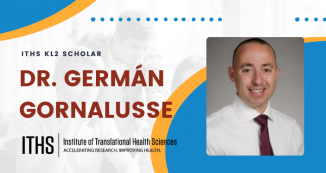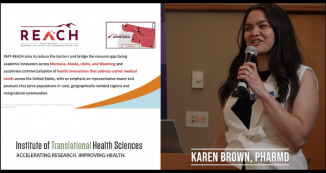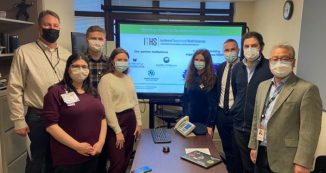
15 Dec Reprogramming the Body to Fight Neuroblastoma Cancer Cells
T cell therapy sounds like something out of a science fiction novel: a patient’s cells are reprogrammed to seek and destroy cancer cells. But T cell therapy, also known as immunotherapy, is a reality to researchers at Seattle Children’s. The new approach involves reprogramming T cells, the white blood cells that fight infection, to attack cancer cells.
Dr. Julie R. Park, an attending physician at Seattle Children’s, is leading the effort to treat neuroblastoma, a rare childhood cancer that forms in nerve tissue, through T cell therapy.
Park is currently enrolling patients for a Phase 1 clinical trial testing T cell therapy in adolescents with recurrent or refractory neuroblastoma. The trial is known as Engineered Neuroblastoma Cellular Immunotherapy (ENCIT-01). Park’s trial is based on results from another Seattle Children’s trial that used immunotherapy for recurrent leukemia.
If all goes well, the chimeric antigen receptor T cells will begin attacking the cancer cells as if they were attacking an infection.
For Park’s ENCIT-01 trial, staff members at Seattle Children’s Research Institute remove T cells from a sample of the patient’s blood. The T cells are then genetically modified by GMP facility at the Ben Towne Center for Childhood Cancer Research to produce special receptors called chimeric antigen receptors (CARs). These receptors allow the T cells to recognize a specific protein that is found on cancer cells.
The modified T cells are then infused back into the patient. If all goes well, the chimeric antigen receptor T cells, guided by their receptors, recognize the protein on the cancer cells and begin attacking these cells as if they were attacking an infection. See the reprogrammed T cells in action.
Unlike leukemia, neuroblastomas are solid tumors, and that makes them harder to treat.
In any clinical trial, you have to set what your endpoints are. You need a biostatistician to help you define those and help you build the roles on how the trial will be performed.
ENCIT-01 is a Phase 1 clinical trial, meaning Park and her team are studying how much of the therapy to give, how to deliver it, and how effective the therapy is with each patient. “The role of a Phase 1 trial is to understand the toxicity and when you have exceeded what you set forth as acceptable toxicity and when you have not,” she said.
Defining these levels of toxicity is a critical component of the study. To support this component, Park worked closely with Assaf Oron, a Senior Statistician with the Institute of Translational Health Sciences’ Children’s Core for Biomedical Statistics (CCBS) to design the trial’s dose-escalation and stopping rules. Oron also serves as the trial’s statistician. “In any clinical trial, you have to set what your endpoints are. You need a biostatistician to help you define those and help you build the roles on how the trial will be performed. It allows rigor around the trial. You’re trying to be as unbiased as possible,” she said.

Dr. Julie R. Park
Photo courtesy of Seattle Children’s
Park added the ENCIT trial is unique from a biostatistics perspective because they are “utilizing a relatively novel approach to this Phase 1 trial in using a “k-in-a-row” up-and-down statistical design that is a little different than the typical 3+3 design.”
Park expects Phase 1 of this trial to be open for the next year. There are currently 11 patients enrolled in the study, and six have been treated to date. So far, Park has not seen any unexpected toxicity.
Asked about next steps for the ENCIT-01 study, Park said, “We want to continue the study and hopefully be able to find a dose of T cells that allows persistence in the patients. If we’re able to do that, the next steps will be to decide if we expand that for a Phase 2 trial or if alternatively trial combinations that would attack the microenvironment and allow the T cells to work more rapidly.”
To learn more about Park’s study, please visit the Seattle Children’s website. More information about available biostatistics support for clinical research can be found by visiting the ITHS biostatistics web page.







